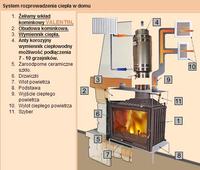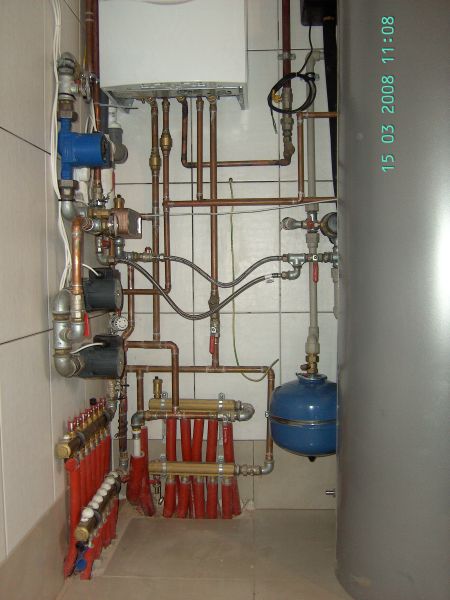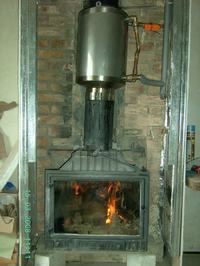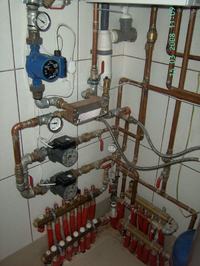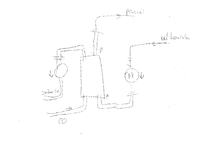Hello.
I modified not the fireplace but the goat. The goat is a "Caesar" model, adding a water jacket. I just stuffed my coat into the fireplace itself. I`m not afraid of melting the pipes, because there is always water in them in the winter. Cold water - I mean not exceeding 80 degrees. This goat has been operating since the beginning of the heating season. I don`t know if I didn`t heat the fireplace, there would be no problem with boiling water, but this is the result of a properly selected water flow through the goat. The installation is a closed system with UPS protection of the pump and a 1.5 atm safety valve. With this system I heat 140 m2, but it is a bit small. Tomorrow I will finish the exchanger in the smoke chimney itself. It is important that the exchanger is made of one piece of pipe, then once a year it needs to be burned off the tar that accumulates, as well as the goat. During firing, the pipes get very hot and this process must be carefully controlled, so the welds on copper pipes must be well made. I checked the burning process and after burning, you can use a vacuum cleaner to collect the coal.
Sorry for the quality, the photos were taken with a phone.
Such systems cannot be gravity-fed, the additional pipe at the top is an air vent, the advantage is a small water charge, so the system heats up quickly. This is important in the summer when only domestic water needs to be heated.


I just fired up my goat again with a new fireplace insert.
The maximum power of the goat is 12kW, as you can see on the heat meter, you can achieve a little more and in the form of hot water, not counting the radiation of heat into the air, it works great. I do not regret the costs incurred for a new stainless steel pipe and 25 m of copper pipe. It`s true that I don`t have water in the tanks yet, they`ll connect it tomorrow, but I`ll probably heat up 600 liters in no time.



So far, I started only with the underfloor heating, cooled down to a temperature of 9 degrees, about 80 m2, on the power supply I reached 40 - 50 degrees without any effort, after about six hours of heating the floor reached a temperature of 26 degrees. the exchanger has a diameter of 260 mm and a total length of 1 m. During the entire heating time, the exchanger casing was cold as a fish, even the rag did not dry and the connections to and from the outlet were hot, I obtained 2.5 liters of condensate, and I burned two crates of wood.
Regards
Added after 6 [minutes]: Hello.
I forgot to add the counter view.
 Added after 1 [hours] 13 [minutes]:
Added after 1 [hours] 13 [minutes]: Hello.
Quote: However, it leaks from the connections between the exchanger and the fireplace and condenses heavily.
DonRomano, quickly modify the exchanger above the fireplace. You won`t be able to seal the leaking condensation with anything, I`ve been trying to control the problem for half a year. The design of the exchanger must have something like a tight gutter with a pipe that drains the condensate into the sewer.
Otherwise you won`t solve it and you will have smokehouses in your cottage.
Regards.
